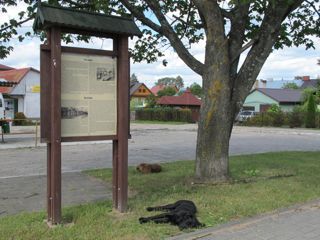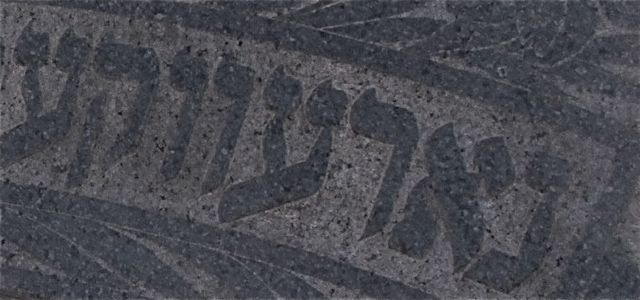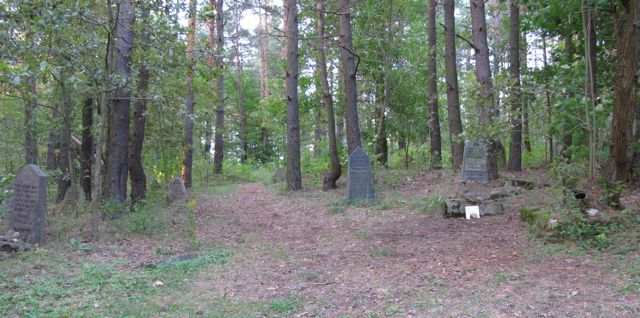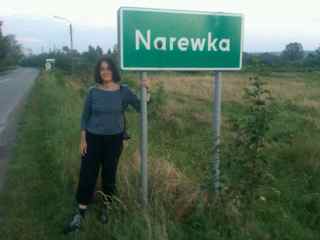|
Narewka
History of Narewka (Transcription of English text from public sign in Narewka's main square)  (Photograph by Joy Kestenbaum, August 2010) NAREWKA
The beginnings of Narewka settlement are connected with setting an ore in the property of Narewka. It was established before 1639 on the right bank, and was a small plant processing in a primitive smelting furnace the sod ore that occurs in aboundance in the muddy meadows of the river valley. The energy for the smithing machines came from the flowing water that moved the water-wheel.
The settlement took its name after the river. Narewka’s favourable location enabled its development. As it was set on a navigable river, it was where timber and other forest goods were brought to be floated on the Narewka River and then along Narew to Vistula. In the settlement’s vicinity there was also a junction of communication routes (from Grodno and Pružany to Bielsk Podlaski and Kamieniec Litewski).
In 1777 King Stanislaw August Poniatowski founded in Narewka a Roman Catholic church of St. John the Baptist. At the beginning of the 19th century the spatial layout of the settlement was very simple and consisted of two big crossing streets, which enhanced compact architecture. The most important institutions functioned by the crossroads, namely the church and the presbytery, the inn and the pub. In the eastern part of Narewka by the road to Pružany, a farm with a mansion and a village was established. In the first half of the 19th century this farm became State property. The parcelled out grounds were settled by Jews coming from Orla and Pružany. They occupied themselves with handicraft and commerce. A big wooden synagogue with gable roof was erected. In the north-eastern outskirts of Narewka a Jewish cemetery was founded. What remained to our times in the area of 1 ha are about 150 tombstones. In 1879 the number of the town’s inhabitants reached 863, 778 of which were Jewish. Repressive measures against the inhabitants of the Bialowieza Forest were taken because of their participation in the November and January Uprisings (1831, 1863). In 1844 the grounds belonging to the Catholic Church were confiscated. In 1864 it was decided that an Orthodox church should be built. The temple was consecrated three years later.
In 1908 Roman Catholics in Narewka were allowed to reactivate their parish and build a new church. The temple was erected in a new place on the opposite river bank, and consecrated in the name of St. John the Baptist in 1914. At the end of the 60s it was destroyed by a fire. A new church, built in the years 1970-1973, was located in the same place as the previous temple.
In
the period between
the
two world wars Narewka functioned as a centre
of commerce and the
handicraft
base for the needs of the local market. It
also played an important
religious
role for two religions, namely for Christians
(both Catholic and
Orthodox) and
for Jews. Tragic events of the two world wars
changed the nationality
composition of Narewka’s inhabitants. After
the First World War many
Orthodox
people did not come back from biezhenstvo
(refuge to Russia) and
between 1941
and 1943 the Jewish community was murdered by
the Nazi authorities of
the III
Reich (Holocaust).
|



